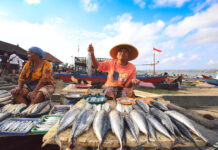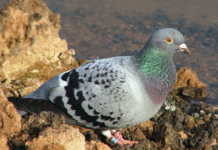BEEF cattle improvement programmes have focused for decades on promoting the rapid growth of calves. Now, the goal is to improve other traits, such as meat tenderness or ribeye muscle area.
Researchers at São Paulo State University (UNESP) in Brazil who are studying the genome of the Gir breed of Zebu cattle have identified 35 genes associated with reproduction, milk composition, growth, meat and carcass, health or body conformation traits. This identification is a key step toward the development of novel lines with traits desired by producers and consumers.
The results of the study have recently been published in the journal PLOS ONE by the group, which is led by Josineudson Augusto II de Vasconcelos Silva, a professor at the university’s Botucatu School of Agrarian & Veterinary Sciences (FCAV-UNESP). The research was supported by São Paulo Research Foundation – FAPESP. Researchers affiliated with the University of Georgia in the United States and with Brazilian animal science institutes located in Nova Odessa and Sertãozinho, both in São Paulo State, also took part.
The Gir breed is of Indian origin and has been successfully introduced into the tropics. It is one of the main cattle breeds farmed in South American tropical countries, especially Brazil. However, the various populations have pronounced differences. Strong artificial selection in recent decades has increased the genetic differentiation among herds in countries of the region.
Gir cattle are mainly farmed for milk in Brazil today, although they were once an option for meat producers, who now prefer Nelore cattle.
To locate the genes associated with beef and dairy production in Gir cattle, the researchers analysed the genotypes of animals from different populations, including a herd raised between 1976 and 2003 at the Sertãozinho Animal Science Institute.
During this period, the institute’s scientists selected animals from the herd to develop traits associated with meat production, such as rapid yearling growth. As a result, calves born to cows in this herd became steadily larger. In 2003, however, the herd was sold in response to a change in preference among farmers, who opted to raise Gir for dairy rather than beef.
At that time, Brazil launched its Dairy Gir Genetic Improvement Programme (local acronym PNMGL). Selection for traits associated with milk production led over the years to cows with steadily larger udders that produced increasing amounts of milk.
The genotyping exercise used hair samples collected in 2003 from 173 bulls, cows and yearlings belonging to the herd selected for beef production and from 273 animals belonging to the PNMGL herd, which was selected for dairy production and raised on five farms in Minas Gerais and São Paulo State.

















